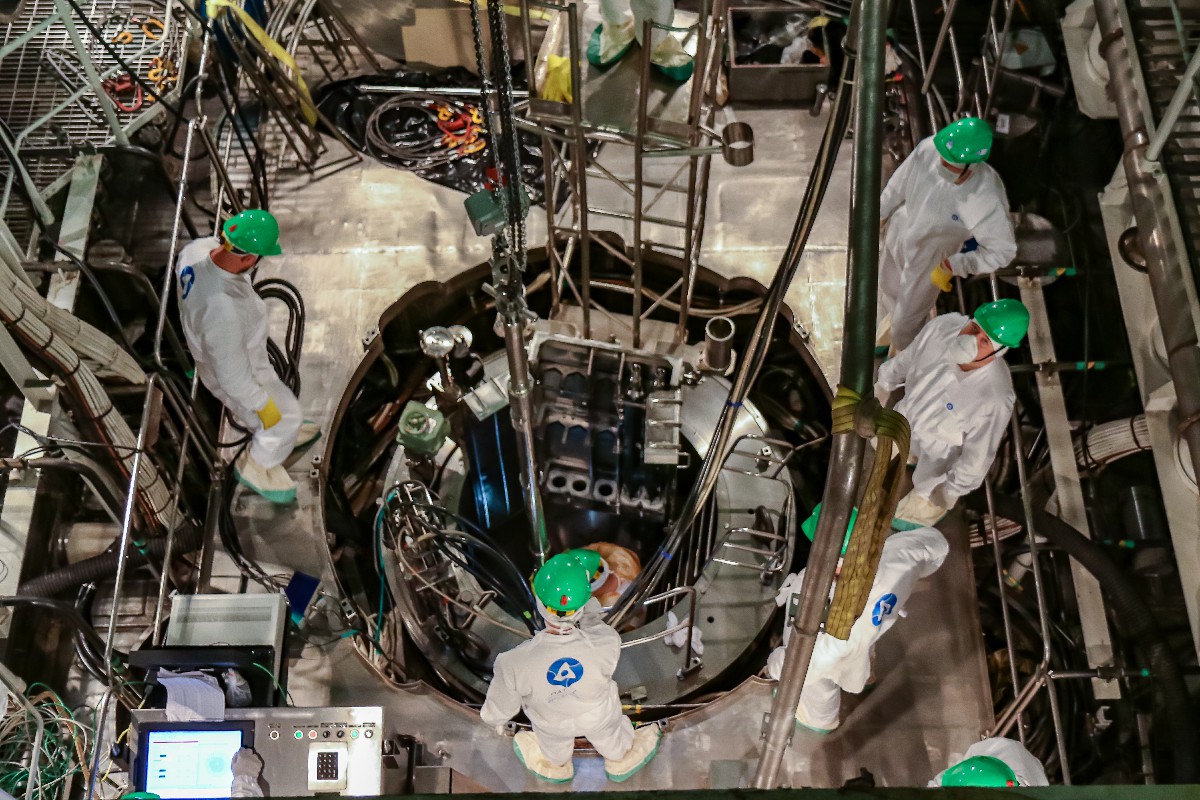
Akademik Lomonosov Refueled
back to contentsReactor refueling seems to be a routine procedure. But when it comes to refueling of the world’s first floating nuclear power plant, the news becomes interesting for the global nuclear and — more broadly — energy community.
Fuel transportation
The floating nuclear power plant (FNPP) is moored at the town of Pevek in the Chukotka Autonomous Okrug, which lies in its entirety in the Far North. New fuel assemblies were brought to Pevek via the Northern Sea Route. “Fuel for every Russian nuclear icebreaker and FNPP is manufactured at Rosatom’s subsidiary Elemash. After passing the necessary factory tests, the set of fuel assemblies for the first reactor was shipped by train from Elemash to Murmansk, the base of the Russian nuclear fleet. In Murmansk, fresh nuclear fuel and large-size equipment were loaded onto a motor vessel to be transported to Chukotka,” said Anton Markov, chief expert of the Non-Serial Reactor Operation Department at RosEnergoAtom.
Reactor core specifics
The floating power unit is equipped with two KLT‑40S nuclear reactors capable of generating up to 70 MW of electricity and 50 Gcal/h of heat in the nominal operating mode, which is enough to provide the needs of a city with the population of 100,000.
The KLT‑40S reactors installed on the FNPP have a specific reactor core: it is of a cartridge type and not of a channel type as it used to be. The cartridge-type core has an increased refueling interval of 3–3.5 years and a 1.5‑time smaller share of fuel in the electricity production cost.

The refueling procedure at the FNPP has its specifics, too. It is not some of the fuel assemblies that are replaced once in a year or year and a half as happens at large nuclear reactors, but the entire reactor core. As this refueling operation has been the largest maintenance campaign in terms of scope and duration since the FNPP commissioning, it involves the staff of the FNPP, Rosatom’s specialized maintenance provider AtomEnergoRemont, reactor designer OKBM Afrikantov (part of Rosatom’s power engineering division), and others.
Refueling procedure
The FNPP reactors are refueled one after another. While one of the reactors is being refueled, the other continues to generate electricity, so consumers experience no power outages.
The refueling procedure started back in late July. Spent fuel assemblies were removed and placed into storage. Both fresh and spent fuel is stored on board the FNPP in dedicated isolated rooms.
At present, the internals of steam generators are being replaced. When the replacement is completed, the loading of fresh fuel will begin. After the core is loaded with fuel, the reactor will be assembled. This will be followed by the first criticality and first power operations with the fresh core.
In-process safety is ensured with the sensors of the reactor control and automated radiation monitoring systems installed on the FNPP and in Pevek. The sensor readings show no deviation from the norm.
The maintenance campaign at the first reactor will be completed by the end of the year. The same operations — nuclear fuel delivery from Elektrostal, where Elemash is based, to Pevek, refueling of the second reactor, and replacement of the steam generator internals — are scheduled for 2024.
FNPP in Pevek
Our readers remember that the floating nuclear power plant was delivered to Pevek on September 9, 2019. The FNPP fed the first electricity into the isolated power grid of the Chaunsky-Bilibino Industrial Area of the Chukotka Autonomous Okrug in December 2019 to become Russia’s northernmost power plant (this title used to be held by the Bilibino Nuclear Power Plant). In May 2020, the FNPP was put into commercial operation.
In September 2023, a 110 kV power line stretching 490 km was commissioned to connect Pevek and Bilibino. The line increased the reliability of power supply for Bilibino consumers and local mining sites (Baimsky GOK is the largest of them) by transmitting electricity from the FNPP.




